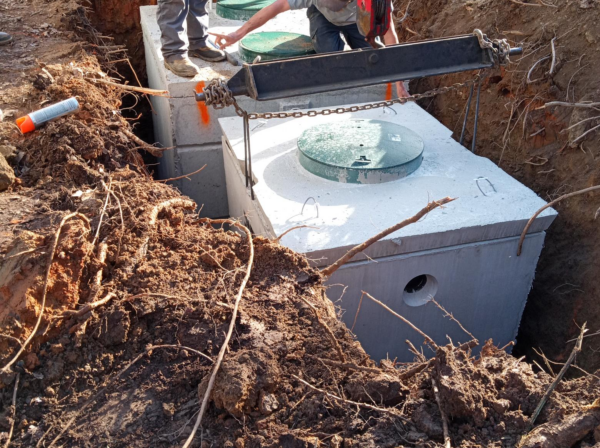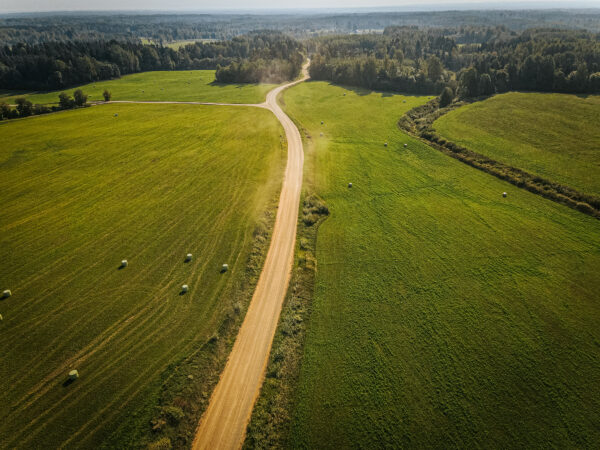Challenges of a Tribal City: Eagle Butte, SD

State recognized municipalities located within Tribal boundaries can sometimes have unique challenges not seen in a typical small town. The incorporated city of Eagle Butte, South Dakota (population 1,258, of which 88% are American Indian) is the home of the Cheyenne River Sioux Tribe (CRST) Tribal headquarters and lies inside the boundaries of this Tribal nation. The CRST reservation was created in 1889 by the breakup of the Great Sioux Reservation with four of the seven Lakota bands. The reservation is located in north central South Dakota and covers almost all of Dewey and Ziebach Counties. The total land area is 4,266,987 square miles, making it the fourth largest Tribal-owned land area in the United States.
Before the CRST created their own utility, any Tribal-paid improvements made to utilities inside city limits were transferred to the city to maintain. Around 2014, the CRST created the Mni Wašté Water Company and started handling their own wastewater operations and maintenance for the Reservation. As a result, the question of ownership came into play for prior improvements and maintenance to the aging system and who was responsible for future repairs and replacements. With those unanswered questions, there was potential for conflict. For example, at one point in time, one entity hired a contractor to inspect the sewer lines with a camera, resulting in the other entity issuing a cease-and-desist order through their legal counsel. Although the video confirmed that the gravity sewer infrastructure needed repairs and replacements, which was already obvious due to the known collapsed non-working sewer lines, the situation has become contentious because there are two utilities vying for the utility revenue.
The Cheyenne River Sioux Tribe Long Term Group (CRSTLTG) contacted Midwest Assistance Program (MAP) to request their assistance in getting their Tribe and Eagle Butte back on track to make necessary improvements to their infrastructure. Initially, MAP identified possible funding to fix these issues: the State Revolving Loan Fund (SRF), the United States Department of Agriculture Rural Development (USDA-RD), and/or the Indian Health Services (IHS). However, until ownership could be determined, it was impossible to know which entity applies for and manages the funds, since only one utility can apply for and receive funds with the approval of the other entity.
The first thing MAP did was identify all the players and convened a meeting that included representatives from the city of Eagle Butte, CRST, CRSTLTG, USDA-RD, IHS, the Planning District, and the city’s engineering firm. SRF representatives had removed themselves from the discussion, recognizing that Eagle Butte could obtain more grant funds through USDA-RD, considering their Tribal status and that their median household income (MHI) was below 60% of the state’s average. Dialogue could now resume between all the parties to ensure the repairs were made to the systems.
MAP then started helping the city with the USDA-RD application, while simultaneously providing on-site training to the new finance officer. MAP drafted a letter of support from the city to the CRST, asking for their support for the improvements. If support was granted, the city would receive an additional 10% in USDA-RD grant funding, but the CRST has yet to sign the letter.
Despite these setbacks, these entities are all in dialogue to uncover solutions for their utility issues, with MAP’s assistance. As a result, the engineering firm initiated planning and worked on gathering cost estimates, while USDA-RD reopened the old applications. The CRSTLTG is grateful for MAP’s assistance and remains positive that the two entities can work out their differences for the good of their community.
“Your commitment has had a profound impact on our community, and we deeply appreciate the care and attention you’ve shown throughout this process. Your efforts have not only addressed our immediate needs but have also laid the foundation for a stronger, more resilient future for our community.” – Art Rave, Cheyenne River Sioux Tribe Long Term Group
MAP will continue to provide assistance for a long-term solution for the residents of Eagle Butte and the Cheyenne River Sioux Tribe.
This article was funded under RCAP’s EPA Treatment Works 3 – Tribal 23 – 26 grant.



